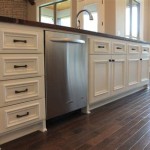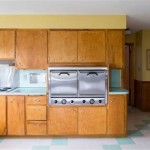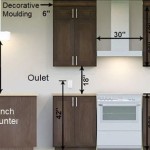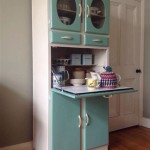How Far Apart Should Kitchen Pantry Shelves Be Installed?
Optimizing pantry space requires careful consideration of shelf spacing. Properly spaced shelves maximize storage capacity while ensuring easy access to stored items. This article explores the factors influencing ideal pantry shelf spacing and offers practical guidelines for achieving optimal organization.
The primary factor determining shelf spacing is the height of items intended for storage. Common pantry staples vary significantly in size, from small spice jars to bulky cereal boxes and canned goods. Measuring the height of the tallest items intended for each shelf provides a starting point for determining appropriate spacing.
Grouping similar items together is a key organizational strategy. Designating shelves for specific categories, such as canned goods, baking supplies, or breakfast items, allows for more efficient use of space and simplifies locating desired items. This categorization also informs shelf spacing decisions, as shelves dedicated to smaller items can be spaced closer together than those intended for larger items.
Adjustable shelving offers the greatest flexibility for accommodating varying item heights. These systems utilize standards and brackets, allowing shelves to be repositioned as needed. This adaptability proves invaluable as storage needs evolve over time. When installing adjustable shelving, consider the range of potential item heights to determine the optimal placement of the standards.
Fixed shelving provides a more permanent solution, often offering greater stability for heavier items. However, careful planning is crucial during installation, as adjustments are not easily made later. Accurate measurements of intended storage items are essential for determining appropriate spacing between fixed shelves.
For canned goods, typical shelf spacing ranges from 10 to 12 inches. This allows for easy viewing and access to labels while maximizing vertical storage capacity. Spacing shelves closer together, around 8 inches, can accommodate shorter cans and jars, further optimizing space utilization.
Dry goods like pasta, rice, and cereal boxes often require taller shelf spacing. A range of 12 to 14 inches generally accommodates most boxed items. However, measuring the height of the tallest boxes intended for storage is recommended to ensure adequate clearance.
Smaller items, such as spices, condiments, and small jars, can be efficiently stored on shelves spaced 8 to 10 inches apart. Utilizing tiered spice racks or shelf organizers can further maximize storage capacity in these areas.
Consider incorporating dedicated spaces for larger or unusually shaped items. Appliances, serving platters, or large containers may require custom shelf spacing. Planning for these items during the design phase can prevent future storage challenges.
Beyond the vertical spacing between shelves, the depth of the shelves also plays a significant role in storage capacity and accessibility. Standard pantry shelves typically range from 12 to 16 inches deep. Deeper shelves, up to 24 inches, can accommodate bulkier items but may make accessing items at the back challenging. Shorter shelves, around 10 inches deep, are well-suited for smaller pantries or narrow spaces.
Accessibility is a crucial consideration, particularly for higher shelves. Step stools or pull-out shelves can improve access to items stored on upper shelves, enhancing both safety and convenience. Incorporating these features during the planning process can significantly impact the overall functionality of the pantry.
The overall height of the pantry also influences shelf spacing decisions. Taller pantries offer the opportunity to maximize vertical storage, but require careful planning to ensure all shelves are easily accessible. Shorter pantries may necessitate closer shelf spacing to accommodate all necessary items.
Lighting plays a vital role in pantry organization. Adequate lighting makes it easier to locate items, reducing search time and frustration. Installing under-shelf lighting or strategically placed overhead lights can significantly improve visibility within the pantry.
Ventilation is another important consideration, particularly for storing perishable items. Proper ventilation prevents moisture buildup, which can lead to spoilage. Ensuring adequate airflow within the pantry helps maintain the quality and longevity of stored food.
Regularly decluttering and reorganizing the pantry helps maintain optimal shelf spacing. Removing expired or unused items frees up valuable space and allows for more efficient use of existing shelves. This practice also contributes to a more organized and functional pantry.
Careful planning and consideration of these factors will contribute to a well-organized and highly functional pantry, maximizing storage space while ensuring easy access to all stored items.

Kitchen Organization Pull Out Shelves In Pantry Remodelando La Casa

How To Create A Functional And Organized Pantry Diy Beautify Creating Beauty At Home

Installing Sliding Shelves In A Pantry Southern Hospitality

The Can T Go Wrong Pantry Design And Organization Rules

Installing Sliding Shelves In A Pantry Southern Hospitality

Installing Sliding Shelves In A Pantry Southern Hospitality

Kitchen Organization Pull Out Shelves In Pantry Remodelando La Casa

Installing Sliding Shelves In A Pantry Southern Hospitality

Iheart Organizing My Favorite Tips For A Deep Pantry

Kitchen Organization Pull Out Shelves In Pantry Remodelando La Casa








